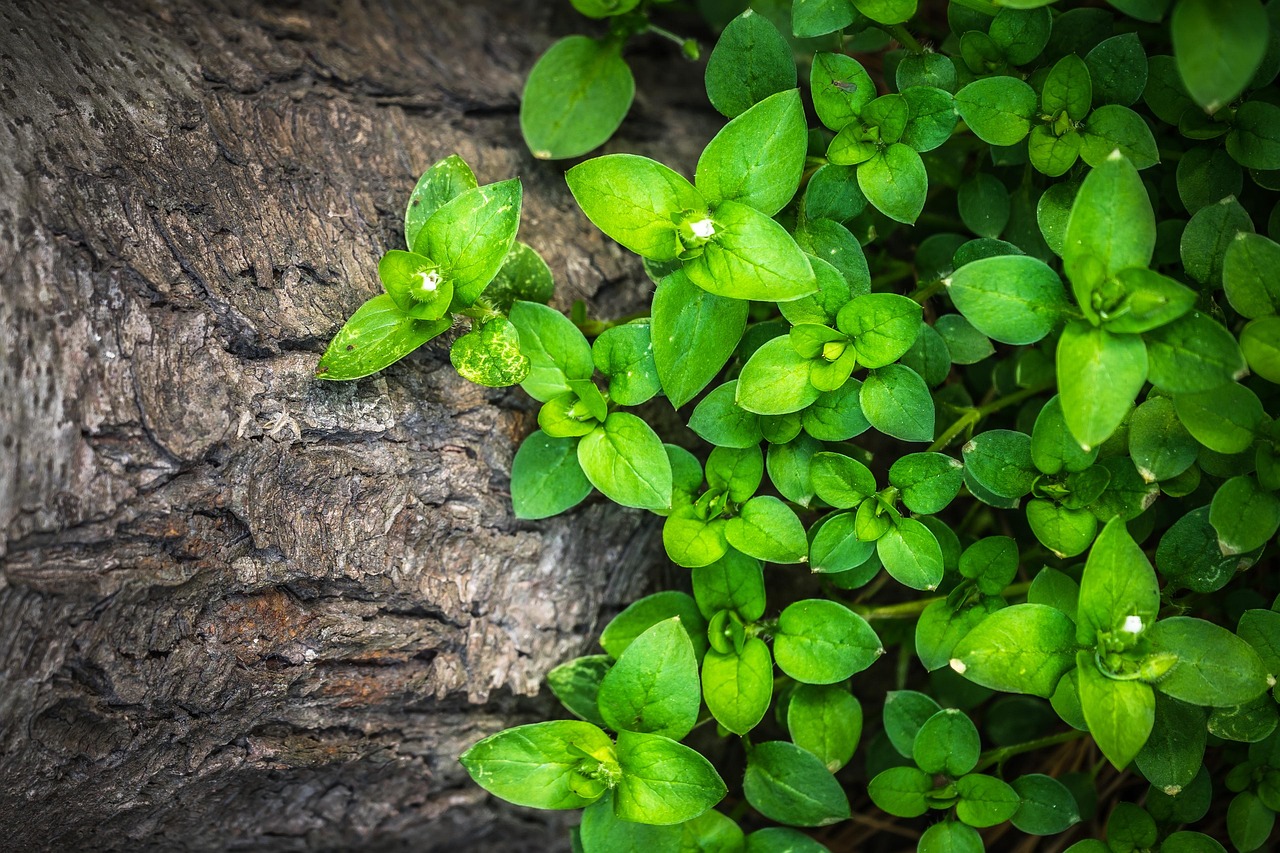Broadleaf Trees: Why They’re the Perfect Addition to Your Backyard
Broadleaf trees are an excellent choice for your backyard due to their aesthetic appeal, environmental benefits, and shade-providing qualities. They enhance biodiversity, improve air quality, and create a serene atmosphere, making them ideal for outdoor relaxation and recreation.
In recent years, homeowners have become increasingly aware of the importance of incorporating trees into their landscapes. Broadleaf trees, characterized by their wide, flat leaves, play a significant role in enhancing both the beauty and functionality of outdoor spaces. These trees provide shade during hot months, serve as natural windbreaks, and contribute positively to the local ecosystem.

Broadleaf trees come in various species, each offering unique features and benefits. They can vary in size, shape, and color, providing homeowners with numerous options to consider when planning their gardens or yards. Some popular broadleaf trees include oaks, maples, and birches. Each of these species has its own growth patterns and seasonal characteristics that add visual interest throughout the year.
Benefits of Broadleaf Trees
Broadleaf trees offer numerous advantages that make them a valuable addition to any backyard. Below are some key benefits:
- Aesthetic Appeal: The variety in color and shape of broadleaf trees enhances the overall beauty of your landscape.
- Shade Provision: These trees provide ample shade during the summer months, helping to cool your home and outdoor spaces.
- Wildlife Habitat: Broadleaf trees support diverse wildlife by providing shelter and food sources.
- Air Quality Improvement: Trees help filter pollutants from the air, contributing to a healthier environment.
- Soil Erosion Control: The root systems of broadleaf trees help stabilize soil and prevent erosion.
The positive impact of broadleaf trees extends beyond aesthetics. They also play a crucial role in combating climate change by absorbing carbon dioxide. This ability to sequester carbon makes them vital for maintaining ecological balance. Additionally, they can lower energy costs by providing natural cooling, reducing the need for air conditioning during hot weather.
Choosing the Right Broadleaf Trees

Selecting the right broadleaf trees for your backyard involves considering several factors, including climate, soil type, and available space. Here are some tips for making the best choice:
- Consult Local Guidelines: Check with local horticultural experts or extension services to understand which species thrive in your region.
- Consider Mature Size: Be aware of how large the tree will grow. Ensure there is enough space for its canopy and root system.
- Evaluate Soil Conditions: Test your soil to determine its pH and nutrient levels. Some trees prefer acidic soil while others thrive in alkaline conditions.
- Think About Sunlight: Different species have varying light requirements. Ensure that the selected tree will receive adequate sunlight based on its needs.
- Plan for Seasonal Changes: Consider how the tree will look throughout the year. Some trees offer vibrant fall colors or interesting bark textures in winter.
When you choose a broadleaf tree for your backyard, you not only enhance your outdoor space but also create an environment that promotes health and well-being. Understanding the characteristics of different species can help you make an informed decision that will benefit both your home and the surrounding ecosystem.
Characteristics of Popular Broadleaf Trees

To help you get started on your journey to selecting the right broadleaf tree, below is a table showcasing some popular species along with their key characteristics:
<td style="border: 1px solid #dddddd
| Tree Species | Height (ft) | Spread (ft) | Fall Color |
|---|---|---|---|
| Red Maple | 40-60 | 30-50 | Brilliant Red/Yellow |
| White Oak | 50-80 | 50-80 | Brown/Red |
| River Birch | |||
| River Birch | 40-70 | 40-60 | Yellow/Red |
Planting and Caring for Broadleaf Trees
Successfully integrating broadleaf trees into your backyard requires thoughtful planning and care. Understanding the best practices for planting and maintaining these trees can help ensure they thrive in their new environment.
Planting Tips
When it comes to planting broadleaf trees, timing and technique are crucial. Here are some guidelines to consider:
- Choose the Right Season: The best time to plant broadleaf trees is during the dormant season, typically in late fall or early spring. This allows the tree to establish its roots before the heat of summer.
- Site Selection: Select a location that meets the tree’s sunlight and space requirements. Ensure that there is enough room for the tree to grow both upward and outward.
- Digging the Hole: Dig a hole that is twice as wide and as deep as the root ball. This encourages root growth into the surrounding soil.
- Watering: Water the tree thoroughly after planting. Continue to water regularly, especially during dry spells, to help establish the roots.
Maintenance Practices
Once planted, broadleaf trees require ongoing maintenance to ensure their health and longevity. Consider the following practices:
- Regular Watering: Newly planted trees need consistent moisture. Water deeply but infrequently to encourage deep root growth.
- Mulching: Apply a layer of mulch around the base of the tree. This helps retain moisture, suppress weeds, and regulate soil temperature.
- Pruning: Regular pruning helps maintain the shape of the tree and removes any dead or diseased branches. Proper pruning techniques can promote healthy growth.
- Pest Management: Monitor for pests and diseases. Early detection and treatment can prevent serious damage.
The Environmental Impact of Broadleaf Trees
Broadleaf trees play a significant role in promoting environmental health. Their contributions extend far beyond individual backyards. Here are some critical environmental benefits:
Carbon Sequestration
Broadleaf trees capture carbon dioxide from the atmosphere, storing carbon in their biomass. This process helps mitigate climate change by reducing greenhouse gases.
Biodiversity Support
These trees provide habitat for numerous species of birds, insects, and other wildlife. By planting broadleaf trees, you contribute to increased biodiversity in your area.
Soil Health Improvement
The root systems of broadleaf trees help prevent soil erosion and improve soil structure. As leaves decompose, they enrich the soil with organic matter, promoting a healthier ecosystem.
Water Cycle Regulation
Broadleaf trees play a significant role in regulating the local water cycle. They absorb rainwater, reducing runoff and promoting groundwater recharge. Their canopy also helps moderate temperatures and humidity levels in the surrounding area.
Broadleaf Trees for Different Climates
Different species of broadleaf trees are suited for various climates. Understanding regional adaptations can help you choose trees that will thrive in your backyard.
Tropical Broadleaf Trees
Tropical regions are home to a wide variety of broadleaf trees. Some popular choices include:
- Mango (Mangifera indica): Known for its delicious fruit, mango trees also provide shade and ornamental beauty.
- Banyan (Ficus benghalensis): This iconic tree offers extensive shade and unique aerial roots.
- Coconut Palm (Cocos nucifera): While technically a palm, coconuts provide shade and are vital for local ecosystems.
Temperate Broadleaf Trees
In temperate regions, several broadleaf trees flourish:
- Sugar Maple (Acer saccharum): Famous for its sap used in making maple syrup, this tree also boasts stunning fall colors.
- Sweetgum (Liquidambar styraciflua): Known for its star-shaped leaves and colorful autumn display, sweetgum adds beauty to any landscape.
- American Beech (Fagus grandifolia): A slow-growing tree that provides excellent shade and aesthetic appeal throughout the year.
Selecting the right broadleaf tree based on your climate can significantly enhance your backyard’s beauty while ensuring the health and vitality of the trees themselves.

Landscaping with Broadleaf Trees
Incorporating broadleaf trees into your landscape design can transform your backyard into a stunning outdoor space. Their diverse shapes, sizes, and colors allow for creative landscaping possibilities. Here are some ways to effectively use broadleaf trees in your garden.
Creating Shade Areas
One of the primary benefits of broadleaf trees is their ability to provide shade. Strategically planting trees can create comfortable, cool areas perfect for relaxation or outdoor activities. Consider the following:
- Patio Shade: Planting trees near patios can offer relief from the sun, making outdoor dining more enjoyable.
- Play Areas: Shade from trees can make children’s play areas safer and more comfortable, reducing the risk of overheating.
- Shade Gardens: Underneath tree canopies, you can cultivate shade-loving plants, creating a lush and diverse garden.
Enhancing Privacy
Broadleaf trees can serve as natural privacy screens. Planting them strategically can block unwanted views and create a more secluded atmosphere. Consider these options:
- Dense Planting: Grouping several trees together can form a thick barrier that shields your backyard from neighbors or street traffic.
- Layering Heights: Combine taller trees with shorter shrubs to create a multi-layered privacy screen.
- Deciduous vs. Evergreen: Use a mix of deciduous broadleaf trees that provide summer shade and evergreen trees for year-round privacy.
Add Color and Texture
The variety of leaf shapes and colors among broadleaf trees can enhance the aesthetic appeal of your landscape. Here are some ideas:
- Seasonal Colors: Choose species that change color with the seasons, such as maples that turn vibrant red or orange in fall.
- Diverse Textures: Mix trees with different leaf shapes and sizes to create visual interest in your garden.
- Bark Varieties: Consider trees with unique bark textures or colors, such as the smooth bark of the birch or the rugged texture of an oak.
Caring for Broadleaf Trees in the Landscape
To maintain the health and beauty of broadleaf trees in your landscape, proper care is essential. Here are key care practices to follow:
Watering Techniques
Efficiency in watering is crucial, especially during dry spells. Here are some methods to ensure your trees receive adequate moisture:
- Deep Watering: Water deeply but less frequently to encourage deep root systems.
- Drip Irrigation: Install drip hoses or soaker hoses to provide consistent moisture at the roots without over-saturating the soil.
- Rain Barrels: Collect rainwater to use for irrigation, promoting sustainability while conserving resources.
Pest and Disease Management
Broadleaf trees can be susceptible to various pests and diseases. Here are some steps to take for prevention and control:
- Regular Inspections: Regularly check for signs of pests like aphids or diseases such as powdery mildew.
- Natural Predators: Encourage beneficial insects like ladybugs that feed on harmful pests.
- Cultural Practices: Maintain tree health through proper pruning, mulching, and watering to reduce stress on the tree.
The Role of Broadleaf Trees in Urban Environments
In urban settings, broadleaf trees play an essential role in improving quality of life. Their benefits extend beyond aesthetics to encompass environmental and social aspects.
Urban Heat Island Effect
Broadleaf trees help mitigate the urban heat island effect, which occurs when urban areas become significantly warmer than their rural surroundings. They provide cooling effects through shade and evapotranspiration, helping to lower surrounding temperatures.
Air Quality Improvement
Trees act as natural air filters. They absorb pollutants such as carbon dioxide, sulfur dioxide, and nitrogen oxides while releasing oxygen through photosynthesis. This process enhances air quality in densely populated areas.
Noise Reduction
Broadleaf trees also contribute to noise reduction in urban environments. Their dense foliage can absorb sound, creating quieter outdoor spaces and improving overall comfort for residents.
Broadleaf Trees in Landscape Design Trends
The use of broadleaf trees in landscaping is influenced by evolving design trends. Understanding these trends can help you choose the right trees for your space.
Sustainable Landscaping
Sustainability is a growing focus in landscape design. Incorporating native broadleaf trees that are adapted to local conditions promotes biodiversity and reduces water usage.
Wildlife-Friendly Gardens
More homeowners are creating wildlife-friendly gardens that attract birds, butterflies, and beneficial insects. Planting a variety of broadleaf trees provides habitat and food sources for these species.
Minimalist Landscapes
The minimalist design trend emphasizes simplicity. Using fewer species of broadleaf trees with striking features can create a clean, modern look while still providing environmental benefits.
By thoughtfully incorporating broadleaf trees into your landscape design, you can create an inviting outdoor space that offers beauty, functionality, and environmental benefits.
Broadleaf Trees: Enhancing Your Backyard Experience
Broadleaf trees are more than just beautiful additions to your backyard; they contribute significantly to your home’s environment and your overall quality of life. Their ability to provide shade, improve air quality, and support wildlife makes them an invaluable asset. Additionally, their versatility allows homeowners to create unique outdoor spaces tailored to personal preferences and environmental needs.
As we have explored throughout this article, broadleaf trees offer numerous benefits that extend far beyond their visual appeal. They play a crucial role in creating comfortable living environments, fostering biodiversity, and improving urban landscapes. By integrating these trees into your backyard design, you can cultivate a serene oasis that enhances both your home and the surrounding ecosystem.
Practical Considerations for Planting Broadleaf Trees
While the benefits of broadleaf trees are clear, there are practical considerations to keep in mind when planning for their addition to your backyard. Here are some final tips to ensure successful integration:
- Soil Preparation: Before planting, assess the soil quality. Conduct a soil test to determine pH levels and nutrient content, and amend the soil as necessary to create optimal growth conditions.
- Spacing and Placement: Consider mature tree size when determining planting locations. Ensure adequate space between trees and other structures to prevent overcrowding and competition for resources.
- Local Regulations: Check local regulations or homeowners association guidelines regarding tree planting, especially in urban areas where space is limited.
- Community Involvement: Engage with local gardening clubs or community initiatives focused on tree planting. This can provide valuable resources and support for selecting and maintaining broadleaf trees.
Broadleaf Trees and Climate Resilience
In light of changing climate patterns, selecting and planting broadleaf trees can also contribute to climate resilience. Trees can help mitigate the effects of climate change by:
- Reducing Urban Heat: Broadleaf trees provide shade that can lower surface temperatures in urban areas, helping combat heat waves.
- Improving Water Management: Trees enhance water infiltration in soils and reduce runoff, decreasing the risk of flooding.
- Increasing Biodiversity: By providing habitat for wildlife, broadleaf trees support ecosystems that can better withstand environmental changes.
Final Thoughts
The integration of broadleaf trees into your backyard landscape is a decision that yields lasting benefits. From enhancing aesthetic appeal to improving environmental health, these trees provide essential contributions that enrich our lives. Their presence not only beautifies spaces but also fosters a connection with nature that is increasingly important in today’s world.
As you consider which broadleaf trees to plant, think about your specific needs and goals. Whether you seek shade, privacy, or wildlife support, there is a broadleaf tree suited for every backyard condition. By choosing native species when possible, you also contribute to local ecology and sustainability efforts.
In summary, broadleaf trees are an excellent addition to any backyard. They enhance the beauty of your outdoor space while providing critical environmental benefits. Investing in these trees is an investment in a healthier, more vibrant future for your home and community.
Ultimately, as you embark on the journey of transforming your backyard with broadleaf trees, remember that each tree planted is a step toward creating a sustainable environment that benefits not only you but also generations to come. Enjoy the process of selecting, planting, and nurturing your trees, knowing that you are making a positive impact on your surroundings.
